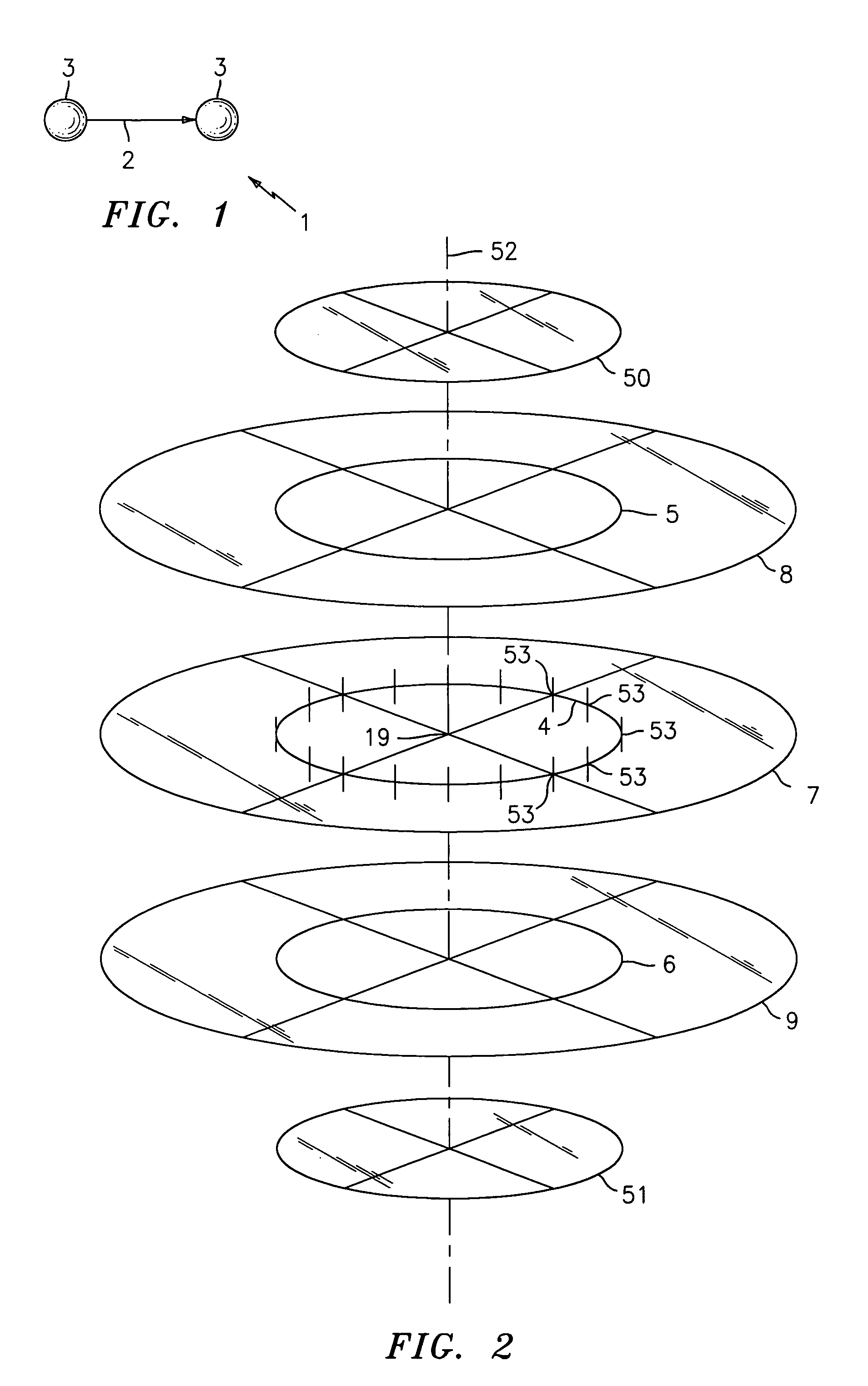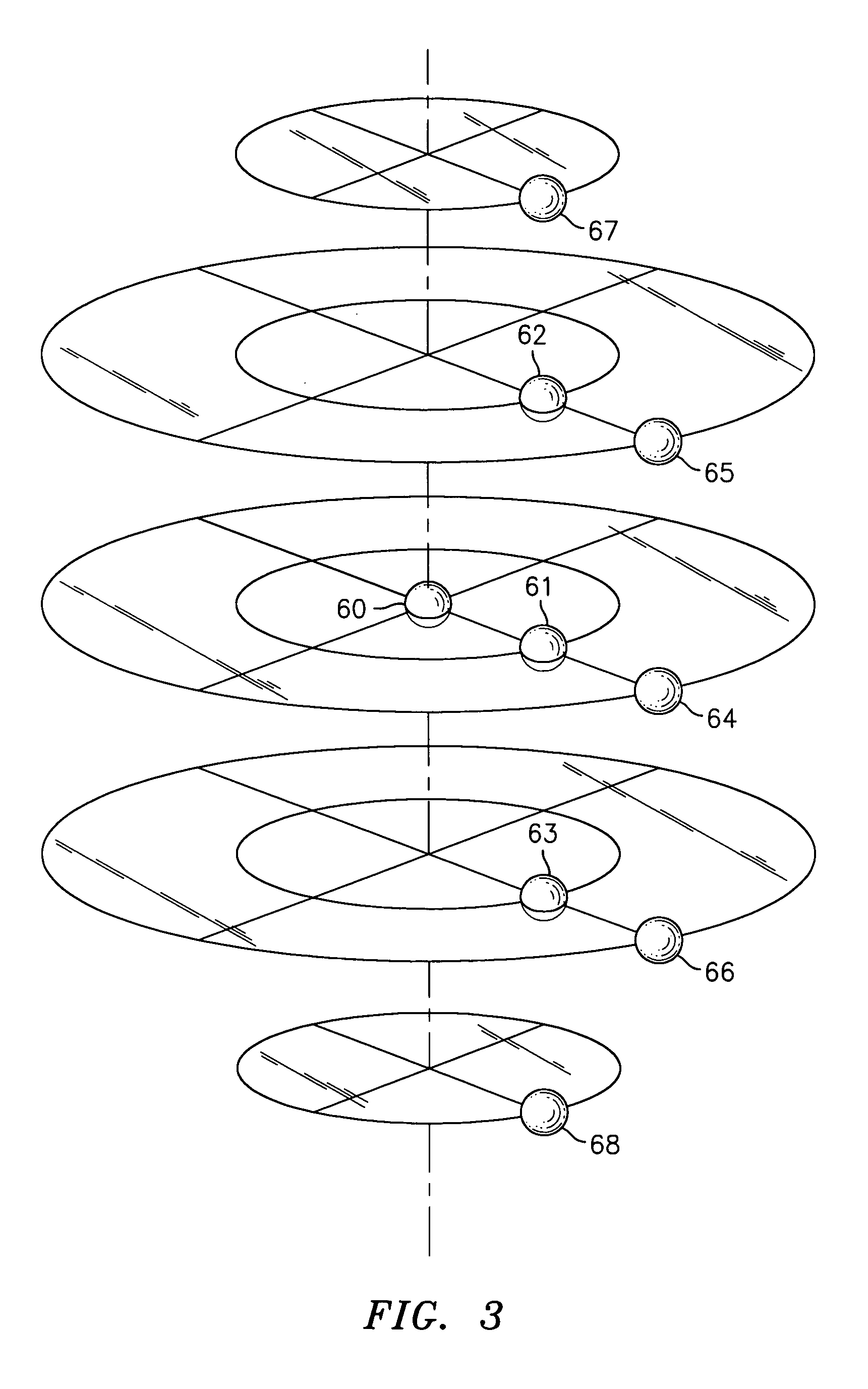Network visualization tool utilizing iterative rearrangement of nodes on a grid lattice using gradient method
a network visualization and grid lattice technology, applied in the field of data visualization, can solve problems such as inability to display data attributes, limitations of visualization to tree-like formats, and lack of existing visual presentation systems that provide developers or operators with easy identification of glitches or bottlenecks, etc., to facilitate the visual exploration of hierarchical patterns
- Summary
- Abstract
- Description
- Claims
- Application Information
AI Technical Summary
Benefits of technology
Problems solved by technology
Method used
Image
Examples
first embodiment
[0167]7. First Embodiment in Hardware
[0168]The schematic hardware structure of a visualization system 10, according to a first embodiment of the present invention, is shown in FIG. 6A. The system 10 comprises a memory 11 for storing network data 12, a memory 13 for storing the corresponding data structure 14, a processor 15 (CPU), an interface 16, a bus structure 17, and input / output means 18. The interface 16 and input / output means 18 allow the visualization system 10 to be connected to a display screen, network, or the like. Furthermore, the system 10 is capable of receiving input through the input / output means 18 and interface 16. Note that in the present embodiment there is one memory 11 for storing the network data 12 and one memory 13 for storing the data structure 14. The network data 12 and the data structure 14 can likewise be stored in one and the same memory. A tape drive, a hard disk drive, a semiconductor memory, or any other storage system may serve as memory.
[0169]In ...
second embodiment
[0173]8. Second Embodiment in Hardware
[0174]The schematic hardware structure of a visualization system 30, according to a second embodiment of the present invention, is shown in FIG. 7A. This system 30 comprises an input 32. This input 32 may receive data from a keyboard, a mouse, or some other peripheral device, or from a communications link, for example. The system 30 furthermore comprises a memory 31 which stores the data, network data, and data structure. Memory 31 may be a random access memory (RAM) for example. There is also a processor 35 and an output interface 33 with a graphics processor 34 and a graphics display generator 36. The processor 35 accesses and / or fetches, as necessary, files (e.g. the network data and data structure) and programs (e.g. a program that embodies the present invention) from memory 31. The graphics processor 34 can be implemented as either a hardware circuit or as a software program recalled from memory 31 and executed by the processor 35. In opera...
PUM
 Login to View More
Login to View More Abstract
Description
Claims
Application Information
 Login to View More
Login to View More - R&D
- Intellectual Property
- Life Sciences
- Materials
- Tech Scout
- Unparalleled Data Quality
- Higher Quality Content
- 60% Fewer Hallucinations
Browse by: Latest US Patents, China's latest patents, Technical Efficacy Thesaurus, Application Domain, Technology Topic, Popular Technical Reports.
© 2025 PatSnap. All rights reserved.Legal|Privacy policy|Modern Slavery Act Transparency Statement|Sitemap|About US| Contact US: help@patsnap.com



